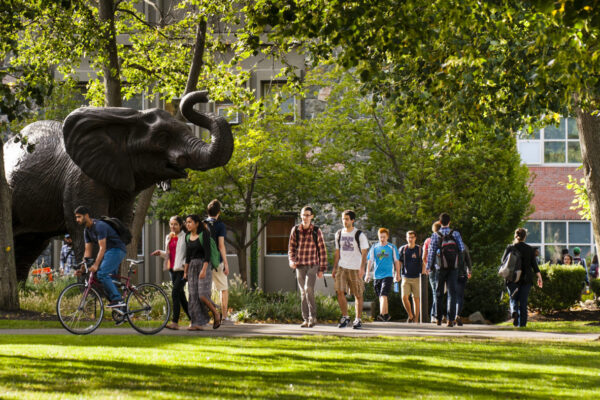Tuskegee University (AL) this year hosted the International Comparative Rural Policy Studies (ICRPS) Summer Institute, which brings together students, faculty, and professionals from around the world and across many disciplines to study and exchange ideas on rural policy.
ICRPS was started in 2004 and takes place at a different institution every year, alternating between North America and Europe. Through a blend of classroom instruction, rural visits, and research presentations, the program prepares participants to analyze and compare polices at the international, national, state, and local levels. This year’s theme focused on social justice, rural, and natural resource policy.
“The theme was selected by virtue of who we are as Tuskegee, a school that rests in the south, and a city that has played a tremendous role in the civil rights movement,” said Thierno Thiam, chair of the History and Political Science Department, in the university’s news report. During the event, Tuskegee focused on the example of the Black Belt South to explore how disparities in social, economic, and environmental justice impact international discourse on race, culture, and class.

An international cohort of 25 graduate students and 18 faculty members attended the two-week program at Tuskegee earlier this summer. Among the disciplines represented were anthropology, business, economics, environmental studies, geography, indigenous studies, and planning, all with a common interest in public policy.
Tuskegee University was well suited to host the institute given its history of commitment to global engagement.
In 2010, Tuskegee was one of seven historically black colleges or universities (HBCUs) that participated in a project run by ACE called Creating Global Citizens. The project, funded by a three-year grant from the Department of Education, explored internationalization efforts at HBCUs, and identified the factors that enhance and impede those efforts. Eight years later, Tuskegee continues its dedication to international scholarly exchange through initiatives such as hosting ICRPS.
—Carly O’Connell
At a Glance
Member Institution: Tuskegee University
Initiative: 15th annual International Comparative Rural Policy Studies Summer Institute
Goal: Bring together students, faculty, and professionals from around the world and across many disciplines to study and exchange ideas on rural policy.
Become a member: As a member of ACE, you join nearly 1,800 organizations that collectively promote, protect and advocate for students, faculty and administrators in higher education. ACE is the most visible and influential higher education association in the nation, and we are at the center of federal policy debates concerning legislation that affects campuses across the country. See more on the ACE website.
If you have any questions or comments about this blog post, please contact us.


